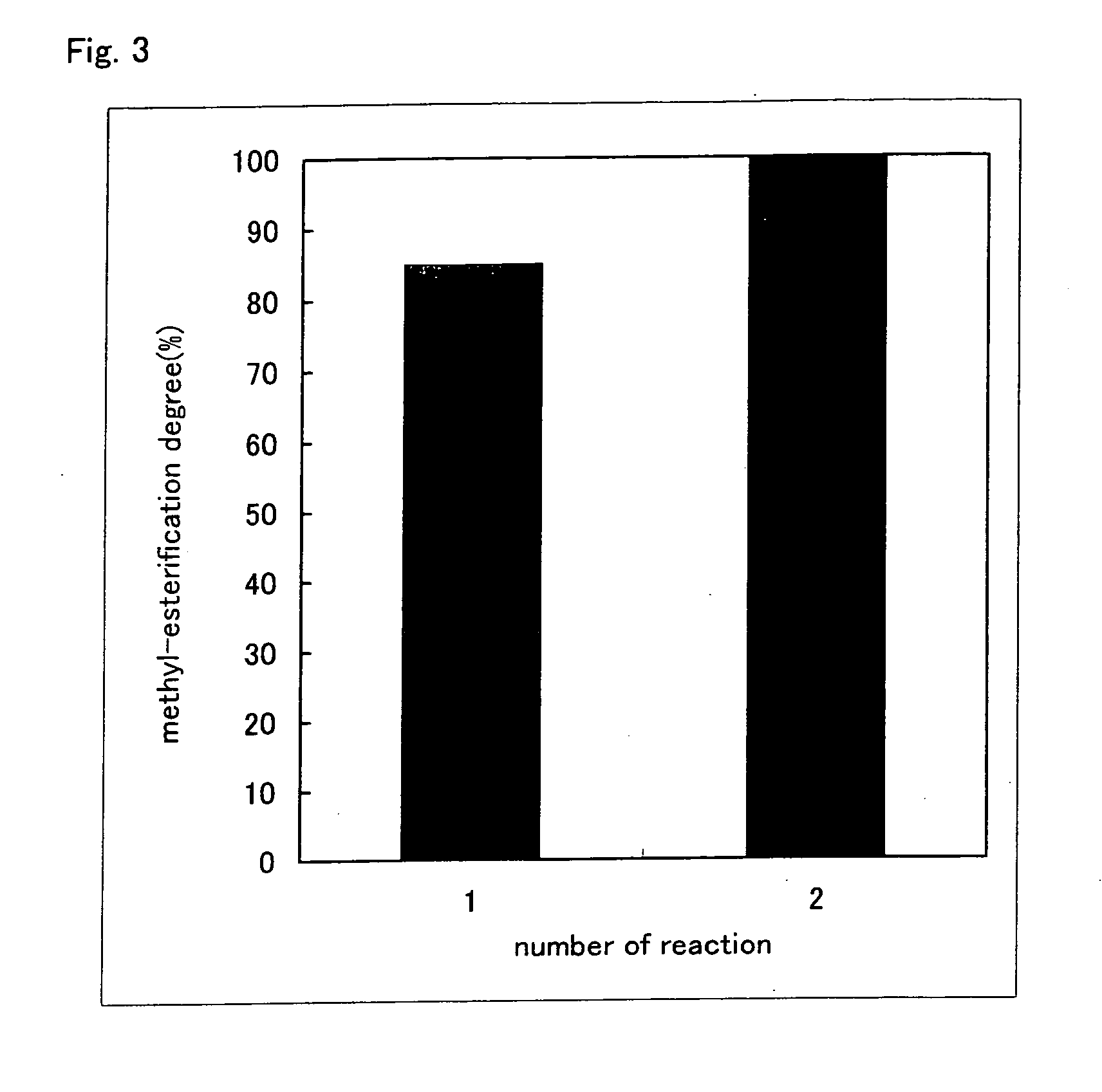Method for producing alkyl-esterified glycosaminoglycan
a glycosaminoglycan and alkyl-esterification technology, applied in the direction of biocide, animal husbandry, organic active ingredients, etc., can solve the problems of degradation after administration and before exerting sufficient efficacy, and achieve the effect of improving the degree of alkyl-esterification, facilitating operation and superior handling properties
- Summary
- Abstract
- Description
- Claims
- Application Information
AI Technical Summary
Benefits of technology
Problems solved by technology
Method used
Image
Examples
example
[0073] Hereafter, the present invention will be explained with reference to the following example. However, the present invention is not limited to the following example.
1. Preparation and Analysis of Methyl-Esterified Hyaluronic Acid 1
1-1. Preparation
[0074] Sodium hyaluronate (molecular weight: 20 kDa, Seikagaku Corporation) was made into free form by passing it thorough a Dowex 50 W-X8 column. The obtained free hyaluronic acid in an amount of 1 mg was dissolved in 1 mL of dimethyl sulfoxide (DMSO), 100 μL of methanol and 30 μL of trimethylsilyldiazomethane (Aldrich) were added to the solution, and the reaction was allowed at room temperature for 2 hours in the presence of nitrogen gas.
[0075] The reaction was terminated by adding 30 μL of acetic acid, and then 1 mL of water was added. Ethanol saturated with anhydrous sodium acetate in a volume 10 times the volume of the reaction solution was added to the reaction solution, and the mixture was left standing at 0° C. for 1 hour...
PUM
| Property | Measurement | Unit |
|---|---|---|
| concentration | aaaaa | aaaaa |
| concentration | aaaaa | aaaaa |
| concentration | aaaaa | aaaaa |
Abstract
Description
Claims
Application Information
 Login to View More
Login to View More - R&D
- Intellectual Property
- Life Sciences
- Materials
- Tech Scout
- Unparalleled Data Quality
- Higher Quality Content
- 60% Fewer Hallucinations
Browse by: Latest US Patents, China's latest patents, Technical Efficacy Thesaurus, Application Domain, Technology Topic, Popular Technical Reports.
© 2025 PatSnap. All rights reserved.Legal|Privacy policy|Modern Slavery Act Transparency Statement|Sitemap|About US| Contact US: help@patsnap.com



